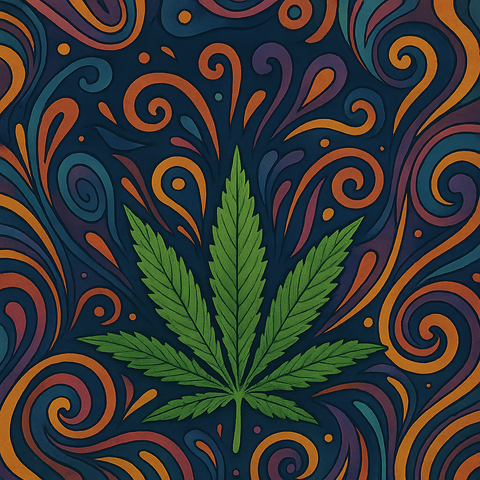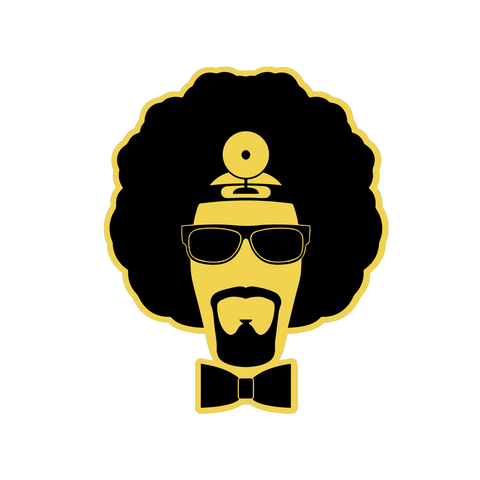
Cannabis, or weed, has become one of the most widely used psychoactive substances around the world. With growing interest in its medicinal and recreational uses, many ask: Is weed a psychedelic? To answer this, we need to explore what constitutes a psychedelic substance, how marijuana affects the brain, and whether it has characteristics similar to substances traditionally considered psychedelic.
Understanding Psychedelics
Psychedelics are substances known for altering perception, mood, and cognitive processes. These drugs typically interact with serotonin receptors in the brain, particularly the 5-HT2A receptor, which plays a key role in shaping sensory experiences, emotions, and consciousness. Classic examples of psychedelics include substances like LSD, psilocybin (the active compound in magic mushrooms), and DMT. When consumed, these substances can induce vivid hallucinations, distorted perceptions of time, and profound emotional or spiritual experiences.
Psychedelics are often characterized by their ability to drastically change the way the brain functions, connecting areas that are normally not linked. This can lead to a sense of unity, visual and auditory distortions, and in some cases, a feeling of transcendence. These profound effects set them apart from substances that simply alter mood or thought processes without inducing these intense perceptual changes.
However, marijuana does not typically trigger the intense experiences associated with classic psychedelics. This raises the question of whether it shares any characteristics with these substances.
Marijuana’s Psychoactive Components
Cannabis primarily contains two active compounds: THC (tetrahydrocannabinol) and CBD (cannabidiol). THC is the compound responsible for most of cannabis's psychoactive effects, while CBD does not have a significant impact on the mind, although it can influence the body in other ways. THC binds to cannabinoid receptors in the brain, specifically CB1 and CB2 receptors, which are part of the body’s endocannabinoid system. This interaction results in the psychoactive effects that users experience, such as euphoria, altered thinking, and an enhanced sense of perception.
When cannabis is consumed, the effects are highly dependent on the individual’s tolerance, the strain used, and the method of consumption. While marijuana can induce a "high" that alters mood and cognitive function, it does not typically lead to the intense perceptual changes that are hallmarks of psychedelics. It is also important to note that cannabis’s effects can vary widely between individuals, with some users experiencing calmness or relaxation, while others may feel anxiety or paranoia.
Potency and Dosage of Marijuana Products
Marijuana comes in a variety of forms, each with different levels of potency. The most common forms are flower, concentrates (such as wax or shatter), and edibles, all of which deliver THC in different amounts.
-
Flower: Contains 10-30% THC, smoked or vaporized for quicker onset and shorter duration of effects.
-
Concentrates (Wax, Shatter): Highly potent, often exceeding 80% THC. Stronger and more immediate effects, not recommended for beginners.
-
Edibles: THC is metabolized by the liver, leading to delayed but more intense and longer-lasting effects. Typical dose is 10mg THC per serving, but potency can vary.
The potency of marijuana products means that dosage is critical for achieving the desired effects. For beginners, starting with a low dose and gradually increasing it is recommended to avoid overwhelming psychological effects. High doses, especially from concentrates or edibles, can lead to hallucinations, extreme anxiety, and confusion, though they generally do not result in the deep, mystical experiences associated with classic psychedelics.
Is Weed a Mild Psychedelic?
At lower doses, marijuana can produce mild psychoactive effects, such as relaxation, heightened sensory perception, and euphoria. In these doses, cannabis may alter how we perceive time, music, and visual stimuli, but it rarely induces the kind of intense, full-body hallucinations typically associated with psychedelics.
When consumed in higher doses, marijuana can begin to share some characteristics with psychedelics. Some users report experiencing altered visual or auditory perceptions, including slight hallucinations, although these are generally not as vivid or sustained as those induced by substances like LSD or psilocybin. It is in these higher doses that marijuana might be considered to have some mild psychedelic-like effects, but the experience is usually less intense and more variable compared to classic psychedelics.
Despite these similarities, marijuana does not usually lead to the profound, spiritual experiences or "ego dissolution" often reported with classic psychedelics. This suggests that while cannabis can alter perception and cognition, it is not typically classified as a psychedelic in the traditional sense.
Marijuana’s Role in Therapeutic Settings
While marijuana is not typically classified as a psychedelic, it does play a significant role in therapeutic contexts. Cannabis has been used to treat a variety of conditions, from chronic pain and anxiety to nausea and muscle spasms. The use of marijuana in these settings reflects its ability to alter mood and perception in ways that benefit certain medical conditions.
Interestingly, marijuana has also been studied in conjunction with psychedelic-assisted therapy. Research into the therapeutic potential of psychedelics such as psilocybin for mental health treatment has sparked interest in combining marijuana with these substances to enhance therapeutic outcomes. Some studies have explored how marijuana may help patients relax before undergoing psychedelic therapy, which is often intense and emotionally taxing. While marijuana’s role in this context is still being explored, it highlights the growing recognition of its ability to alter perception in ways that may complement other forms of therapy.
Stay Curious
Cannabis is a psychoactive substance that alters perception, mood, and thought processes, but it does not meet the full criteria for being classified as a psychedelic. While marijuana can induce mild psychedelic-like effects at higher doses, its experience is typically more unpredictable and less intense than those produced by classic psychedelics like LSD or psilocybin. It’s more accurate to classify cannabis as a psychotropic drug, as it primarily affects mood and cognition without inducing the deep perceptual changes characteristic of psychedelics.
Despite this, marijuana continues to be a powerful substance with a range of effects, from mild relaxation to potent euphoria and, in some cases, hallucinations. Its varying potency, especially when considering different methods of consumption, means that users should approach cannabis with caution, especially when trying new or potent products. For those seeking a truly psychedelic experience, classic psychedelics may be the better choice, but for others, marijuana provides a unique and versatile means of altering consciousness.


